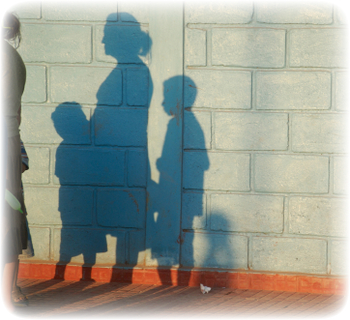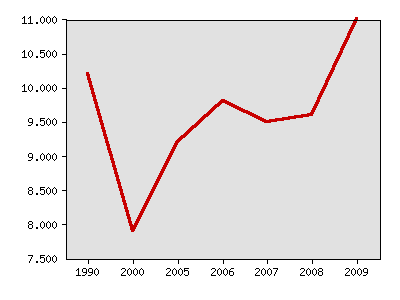Indicator 43: Poverty Rate


Rationale: Measuring the percentage of Minnesotans who live in poverty gives an indication of how many Minnesotans are not financially able to maintain a minimum standard of living. Milestones respondents indicated that incomes must be well above the poverty level in order to be considered adequate.
About this indicator: Poverty rates have risen since 2000 as the economy has slumped. The percent of Minnesotans in poverty decreased from 10.2 percent in 1990 to 7.9 percent in 2000. Since then, poverty rates have shown an upward trend. In 2009 the rate was 11.0 percent.
The 2009 federal poverty threshold for a family of four was $21,954. Many Minnesotans with incomes above the poverty line still have difficulty making ends meet.
Minnesota poverty rate

| Year | Data |
|---|---|
| Minnesota poverty rate, | |
| 1990 | 10.2% |
| 2000 | 7.9% |
| 2005 | 9.2% |
| 2006 | 9.8% |
| 2007 | 9.5% |
| 2008 | 9.6% |
| 2009 | 11% |
For comparison: In 2009, Minnesota had the 11th lowest poverty rate among all states. The national poverty rate was 14.3 percent.
The Current Population Survey also provides poverty data. In 2009, the Minnesota poverty rate was 9.9 percent using the traditional poverty measure and 13.1 percent in the alternative CE-based measure.
Things to think about: The federal government is considering changes in the way poverty is measured. The current measure is often criticized because it does not account for shifts in spending patterns and does not factor in noncash benefits such as food stamps.
Sources:
Related 2002 Milestones indicator:
Local data:




